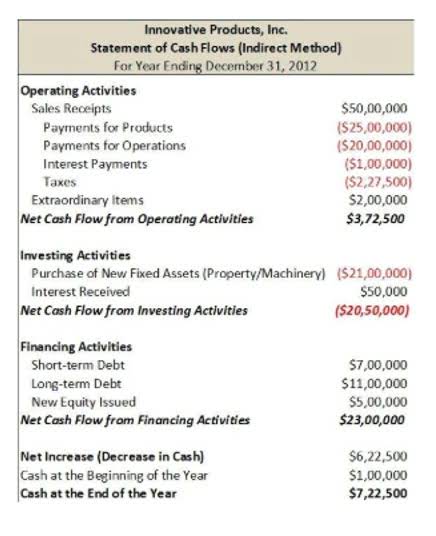What is Cost Control? Strategies, Techniques, and Importance

Time management is an important cost control method because when the total time of a project increases, the total cost of the project also increases. Staying within your estimated project schedule is one of the best ways to stay within your project budget. When you properly control changes to your projects, you have a better chance of controlling costs as well. Accurately forecasting a project’s budget and success requires careful management from start to finish. There will always be inevitable hiccups along the way, but having systems in place to prepare for these deviations can be crucial. While a company can’t influence tariffs, consumer demand or natural disasters, it can control its costs and ability to sustain itself through volatile times.
- This technique facilitates targeted cost-cutting measures, ensuring that resources are utilized efficiently.
- Cost control measures and suggestions will be at the fingertips of any finance professional without having to dig deep and analyze too much.
- Comparing costs is but one way to analyze the financial performance of an organization or project.
- Technology that is outdated or insufficient can lead to bottlenecks, delays, and wasted resources.
- It is calculated by dividing the net profit or return on investment by the initial investment cost.
Cost control and cost analysis

Companies can engage in tax planning by taking advantage of tax deductions, credits, and incentives. They can also structure their business operations in a way that minimizes their tax liabilities while complying with existing tax laws. In addition to minimizing tax liabilities, tax planning can help businesses anticipate and prepare for tax-related expenses, enabling better cash flow management. Asset management is a crucial part of cost control as it focuses bookkeeping on maximizing the value of company assets and minimizing the cost of maintenance and replacement. This involves tracking the location, usage, and condition of assets, as well as analyzing data to identify opportunities for improvement.

Comprehensive spending analysis

Cost control is also a highly cross functional effort, involving input from teams and team members across a business. This includes financial planning and analysis, procurement, data experts, financial controllers, all the way Partnership Accounting up to the CFO. However, the best approach for a company in any given situation will only become clear after thorough cost control analysis.
- But the reality might be that cost control measures that worked in a particular period may not work in the next month or quarter.
- The more detailed spend data your business has, the better you’ll be able to monitor the costs that your business faces.
- Effective cash flow management involves several techniques such as forecasting and budgeting, cash flow monitoring, and implementing measures to increase cash inflow and reduce cash outflow, among others.
- This approach involves close monitoring of financial statements, audits, and regular reviews of expense reports to identify discrepancies and potential areas of misuse or abuse.
- Once a budget has been created, it is important to monitor expenses regularly to ensure that the organization is staying within its budget constraints.
- By eliminating bottlenecks, improving workflows, and enhancing process transparency, organizations can reduce costs and increase profitability.
Real-time insights
Organizational leaders must invest in technology solutions that can help them scale their operations while keeping costs under control. Preventive Cost Control is a proactive approach to managing expenses by identifying cost drivers and implementing measures to reduce or eliminate them before they occur. This helps to avoid unexpected costs and ensures that the organization remains financially stable. Cost control involves establishing a budget, analyzing the costs of goods and services, identifying areas for cost savings, and implementing measures to reduce expenses. Automation in finance management plays a pivotal role by streamlining routine tasks in cost control processes.
- Organizations can track expenses, monitor cost trends, and gain insights into spending patterns, empowering them to make informed decisions and take necessary cost control measures.
- Spend management software can also ensure the right people review the right transactions.
- Actual financial results are compared with the budgeted expectations and if the actual costs are more than what was budgeted, actions to reduce those costs must be implemented.
- Inadequate technology also tends to increase error rates, which can lead to additional expenses due to rework and errors.
- Cost control will improve business performance data metrics and increase profits, cash flows, and return on investments (ROI).
Products

While accounting is essential to your business, think of it as surface-level financial tracking. Cost control goes beyond balancing books, reconciling accounts and ensuring bills are paid. Standout spend management platforms can also automatically categorize employee spend based on the vendor and employee’s role—saving finance teams hours of work reconciling transactions and closing the books. Premier spend management systems can also distribute corporate cards to employees —complete with spend limits and vendor controls tailored to each cardholder’s business needs. Spend management software can also ensure the right people review the right transactions.
It involves determining the optimal price point that aligns with the company’s objectives, market conditions, and the perceived value of the product or service. Deviation analysis involves regularly comparing planned costs to actual expenditures. This proactive approach enables businesses to identify discrepancies and deviations from the budget. There are many strategies and techniques that businesses can employ to master the art of cost control, ensuring a robust financial foundation for cost control future endeavors. To do this you must understand what cost control exactly is, its primary elements, its advantages, disadvantages, and how it is different from cost reduction.